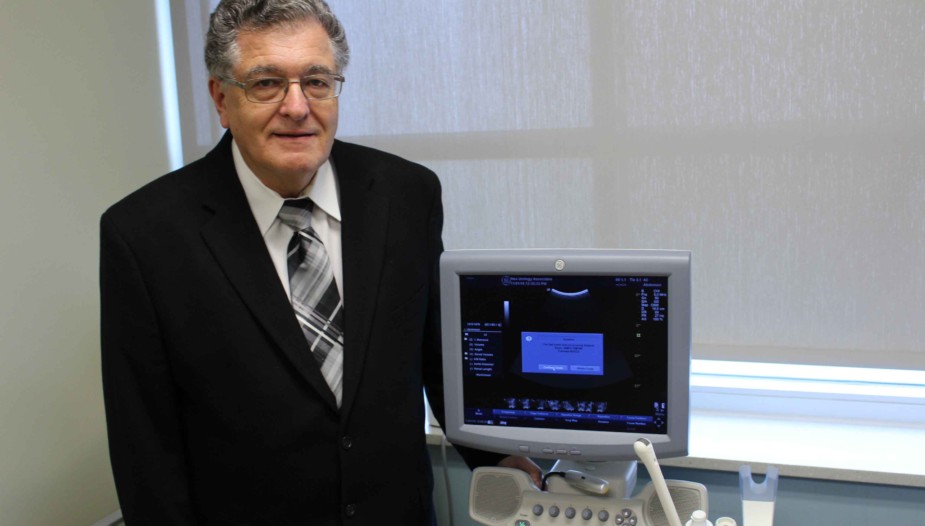Urologists Urge Men to Get PSA Tests
YOUNGSTOWN, Ohio – The number of patients screened for prostate cancer has continued to drop, a trend that is raising concerns among specialists in the Mahoning Valley.
Prostate-specific antigen, or PSA, tests are the most common exams used to detect signs of possible prostate cancer in males. Yet fewer men today are being screened, largely because of an analysis done four years ago that questioned the reliability of these tests.
“We were doing fairly well,” says Dr. Richard Memo, a partner at N.E.O. Urology Associates Inc. “PSAs were being done routinely on men age 40 and up. And death rates from prostate cancer had diminished. We were making progress in finding the right people to treat.”
Then in 2012, the U.S. Preventive Services Task Force released a study that determined patients who didn’t undergo a PSA test and developed prostate cancer fared just as well as those who had taken the PSA examination. And, the study found, many of those cancers detected through the test were asymptomatic, meaning the tumor would not progress, “or progress so slowly that it would have remained asymptomatic for the man’s lifetime.” As such, the panel recommended that the PSA test not be administered.
That means primary care physicians overall are giving fewer PSA exams, which could be the result of men simply refusing to request one based on recommendations from the task force study.
“Urologists feel different about this,” Memo says. Fewer screenings mean fewer biopsies, which therefore reduces the opportunity to catch a cancer in its very early stages. “We would like patients to be attuned to the fact if they have symptoms such as going to the bathroom more frequently, or there’s blood in the urine, or they have a history of smoking – they should come forward and get tested.”
One of the problems is that prostate cancer is often “silent,” Memo says, so it’s important that men be checked periodically. “There is some good data that if your PSA is very low, your chance of getting prostate cancer in your life is also very low,” he says.
A PSA exam is a blood test that measures levels of prostate-specific antigen, a protein produced by the prostate. Elevated levels of PSAs could indicate the presence of cancer, although other factors – such as an enlarged prostate – could also contribute.
Every physician must take into consideration the patient’s overall health, health history and other risk factors. While there is no “normal” level of PSA, physicians have historically used a level of 4.0 or higher as a benchmark to consider performing a biopsy, but these markers are also evolving.
Should a biopsy be necessary, urologists today are aided with advances in genetics testing that can help determine whether a patient could develop aggressive or non-aggressive cancers, Memo says. “When someone gets a biopsy, we can take that tissue, have genetics studies done and use the data to help determine whether or not they will develop aggressive cancers,” he says. “There are some cancers that sometimes we think will be aggressive, but testing comes back and shows that it’s non-aggressive. Now, we can safely watch these patients.”
Dr. Michael Scolieri, a urologist associated with Salem Regional Medical Center, Alliance Community Hospital and Southwoods Surgical Hospital in Boardman, observes that fewer screenings has led to patients with more advanced cancers by the time they are tested. Still, he says the full impact of the trend may not be known for many years out, because prostate cancer is one of the slowest moving and among the most curable when caught in time.
“It’s easy to convince men not to get screened. Patients admit that they don’t need this,” Scolieri says. “But, we are seeing more advanced cancers when they do get screened and that’s problematic.”
According to the Centers for Disease Control and Prevention, 176,450 men in the United States were diagnosed with prostate cancer in 2013. That same year, 27,681 men in the U.S. died from the disease.
Heartening is that treatment for prostate cancer is becoming more advanced every year, Scolieri says. Robotics technology is being used more frequently for prostatectomies, while radiation therapy is more targeted and refined than ever. Thus, more targeted radiation reduces the risk to other organs such as the bladder or rectum.
The latest method to treat prostate cancer, approved last year by the Food and Drug Administration, is high-intensity focused ultrasound, or HIFU, Scolieri says. “It’s available in a limited number of places,” he says. “It should be a viable option for patients.”
HIFU uses ultrasound waves to destroy cancerous tissue in the prostate gland and is being used in a select number of markets. “We’re slow to get into it because it’s not approved by insurance companies yet,” Memo says.
Technological advances in urology are moving forward rapidly, enabling physicians to manage patient care more effectively and efficiently than ever. “There are tremendous improvements in treatment: surgical, radiation and other techniques,” he says. “We can gather data better. We have better registries for patients. We can see patterns more quickly.”
Memo, also chairman of the Urology Care Foundation, the official body of the American Urologic Association, says that it’s still important for men to take the initial step of getting screened periodically. “We’re trying to get the word out,” he says. “Have your doctor check your prostate and possibly get a PSA test.”
Pictured: The number of men coming in for prostate cancer screenings has dropped off since a 2012 federal report, says Dr. Richard Memo. In response, he’s started urging men to still consider the tests.
Copyright 2024 The Business Journal, Youngstown, Ohio.



